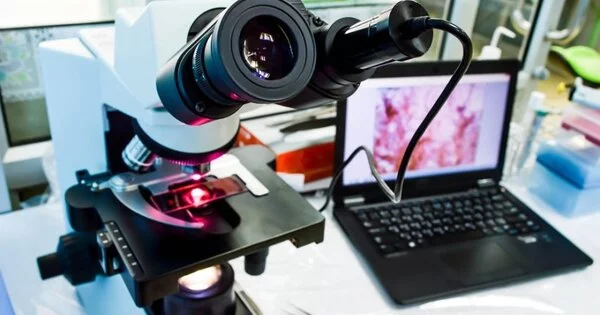Physicists have used light to precisely propel micrometer-sized drones. Their microdrones are about the size of red blood cells. The ability of photons to push microscopic, low-mass objects has long fascinated scientists and engineers, from optical tweezers to solar sails. A German team created “microdrones” with motors powered by unfocused near-infrared light fields.
For the first time, physicists at the University of Würzburg have succeeded in propelling micrometre-sized drones using only light and exerting precise control. Their microdrones are about the size of red blood cells.
When a hand-held laser pointer is “fired,” it produces no discernible recoil forces despite emitting a directed stream of light particles. This is due to its very large mass in comparison to the very small recoil impulses caused by the light particles when they leave the laser pointer.
However, it has long been recognized that optical recoil forces can have a significant impact on correspondingly small particles. Comet tails, for example, point away from the Sun in part due to light pressure. Light sail propulsion of light spacecrafts has also been discussed, most recently in connection with the “star shot” project, in which a fleet of miniature spacecrafts is to be sent to Alpha Centauri.
These motors are based on optical antennas developed in Würzburg, which are tiny metallic structures with dimensions less than the wavelength of light. These antennas were designed specifically for receiving circularly polarized light. This allows the motors to receive light regardless of the orientation of the drone, which is critical for applicability.
Xiaofei Wu
The drones, each with a mass of roughly 2 picograms (pg), can move translationally and rotationally in a 2D water-based environment, and their creators control their paths by adjusting the optical power of the circularly polarized components of the light falling onto the drones’ motors. The scientists say that their invention offers new possibilities for building structures or analyzing surfaces at the nanoscale.
Ordinary quadcopter drones as models
Würzburg physicists led by Professor Bert Hecht (Chair of Experimental Physics 5, Nano-Optics Group) have now demonstrated for the first time in the journal Nature Nanotechnology that it is possible to not only efficiently propel micrometre-sized objects in an aqueous environment with light, but also precisely control them on a surface with all three degrees of freedom (two translational plus one rotational).
They were inspired by ordinary quadcopter drones, which have four independent rotors that allow complete control of movement. Such control capabilities open up entirely new possibilities for the typically difficult handling of nano- and micro-objects, such as in the assembly of nanostructures, the analysis of surfaces with nanometre precision, or the field of reproductive medicine.

Polymer discs with up to four light-driven nanomotors
The Würzburg microdrones consist of a transparent polymer disc measuring 2.5 micrometres in diameter. Up to four independently addressable nanomotors made of gold are embedded in this disc.
“These motors are based on optical antennas developed in Würzburg, which are tiny metallic structures with dimensions less than the wavelength of light,” explains Xiaofei Wu, a postdoc in the Hecht research group. “These antennas were designed specifically for receiving circularly polarized light. This allows the motors to receive light regardless of the orientation of the drone, which is critical for applicability. In a subsequent step, the received light energy is emitted by the motor in a specific direction to generate optical recoil force, which is dependent on the sense of rotation of the polarisation (clockwise or counterclockwise) and either of two different wavelengths of light.”
The researchers were only able to control their microdrones efficiently and precisely because of this concept. Extreme accelerations are possible due to the drones’ extremely small mass. It was difficult to develop the microdrones. It began in 2016 with a research grant from the Volkswagen Foundation dedicated to high-risk projects.
Precise fabrication based on single-crystal gold
The nanomotors’ extremely precise fabrication is critical to the microdrones’ operation. The use of accelerated Helium ions to cut nanostructures from monocrystalline gold has proven to be revolutionary. The drone body is then created using electron beam lithography in the following steps. Finally, the drones must be separated from the substrate and placed in solution.
In future experiments, a feedback loop will be implemented to automatically correct external influences on the microdrones in order to control them more precisely. Furthermore, the research team is working to complete the control options so that the height of the drones above the surface can be controlled. Another goal is to attach functional tools to the microdrones.
















